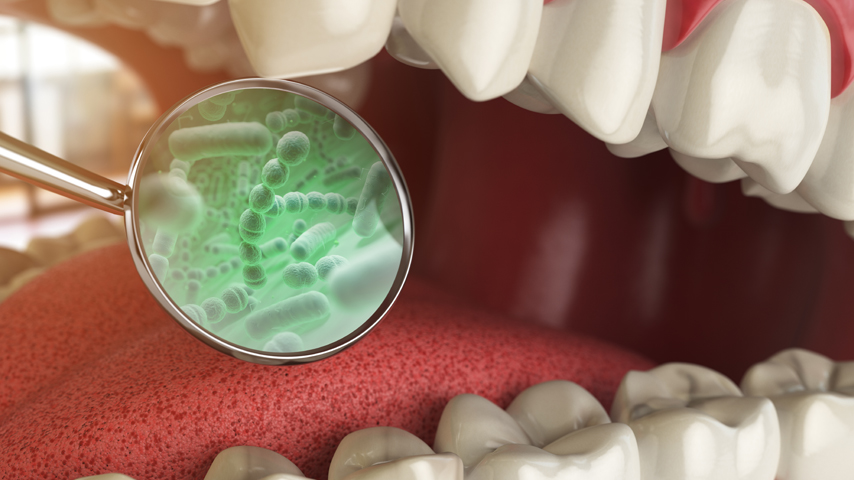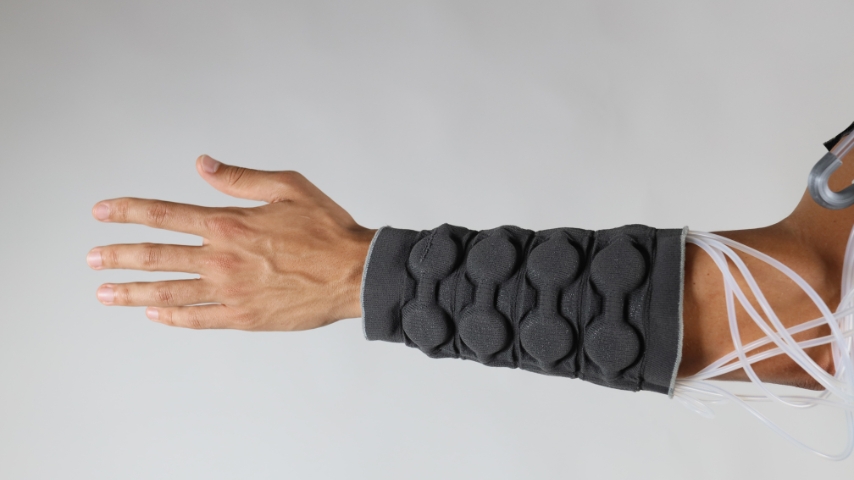‘Artificial Tongue’ Finds and Kills Mouth Bacteria
‘Artificial Tongue’ Finds and Kills Mouth Bacteria


Shanghai researchers have combined existing sensor array tools with analytes and unique responses to develop an “artificial tongue” that not only finds but kills potentially harmful mouth bacteria.
There are about 700 species of microbes that call your mouth home. These small microorganisms include bacteria, fungi, and more. Some oral bacteria are helpful; others, not so much and can even potentially cause harm.
Differentiating the good and bad bacteria is a process that can take a lot of time and can be expensive. Now, a research team based in Shanghai has developed an “artificial tongue” that uses sensors to not only find bad bacteria but also kill those that may be unsafe.
“Dental diseases are usually caused by bacterial infections that can seriously affect people’s health,” said Ling Zhang, associate professor in the department of endodontics of the Shanghai Ninth People’s Hospital, Shanghai Jiao Tong University School of Medicine, China. “The damage is rapid and often irreversible, so there is an urgent need to find problems early before any real damage takes place,” he said.
In the ACS Applied Materials & Interfaces, “Enhanced ‘Electronic Tongue’ for Dental Bacterial Discrimination and Elimination Based on a DNA-Encoded Nanozyme Sensor Array,” Zhang and the team of researchers looked at traditional detection that called for swabbing and culturing or looked for specific DNA markers and searched for an easier, quicker, and more affordable tool. It examined electronic sensors or artificial tongues that already had a proven record of success.
Become a Member: How to Join ASME
“For the purpose of distinguishing multiple bacteria, a sensor array based on nonspecific cross-reactive reactions is selected in this study,” Zhang said. Eventually, the sensor array is made to identify diverse analytes and produce unique fingerprint responses, which then provided a new way to identify multiple bacteria. The next step was using the same tool to kill the found, bad bacteria.
The method works using nanozymes—nanoscopic particles that mimic natural enzymes. Made from iron oxide particles coated in DNA strands, the team added hydrogen peroxide and a colorless indicator to the solution. Bacteria that adhered to the DNA decreased the nanozyme’s reactivity—so a normal bright blue, instead appears less blue.
The researchers used a color signal scheme so that the coated nanozymes with different DNA strands produced unique colors.
For one test, the DNA-nanozyme system (an artificial tongue) the researchers created samples of 11 different dental bacteria species. With this sensor array, the team was able to identify all the bacteria in artificial saliva samples. Then, using the DNA-encoded nanozyme sensor array, the researchers were able to distinguish whether a dental plaque sample came from a healthy volunteer or from a person with cavities.
More for You: Graphene-based Biosensor Offers Instant Diagnosis
“The reactive oxygen species (ROS) produced by nanozyme (IONPs) catalyzed peroxidase-like reaction contribute to the antibacterial effects,” Zhang explained. “ROS could cause insufficient antioxidant defense activity in cells, which will lead to the imbalance of redox homeostasis in cells, resulting in the disturbance of cell physiological function and bacterial death.”
Even better news is that the “DNA/IONPs sensor array could discriminate and inactivate multiple bacteria within 20 minutes,” he explained. This sensor array is also stable and cheap to make. “We believe it will be easy to apply in clinical prophylaxis and treatment,” Zhang concluded.
The big challenge facing the artificial tongue is that mouth samples are infinitely complex. There are “hundreds of kinds of bacteria in the oral environment (like saliva and dental plaque),” Zhang said. So the more standard bacterial patterns of this sensor array may need to be more adaptable.
Secondly, other complex ingredients (like salts and proteins) besides bacteria in clinical samples may interfere with the ability of the sensor array to distinguish among the microbes they come in contact with.
For this challenge, machine learning should help this project move forward, Zhang said. Simply put, “more powerful calculation ability might provide support for more accurate results.”
Cathy Cecere is membership content program manager.
Differentiating the good and bad bacteria is a process that can take a lot of time and can be expensive. Now, a research team based in Shanghai has developed an “artificial tongue” that uses sensors to not only find bad bacteria but also kill those that may be unsafe.
Faster and cheaper
“Dental diseases are usually caused by bacterial infections that can seriously affect people’s health,” said Ling Zhang, associate professor in the department of endodontics of the Shanghai Ninth People’s Hospital, Shanghai Jiao Tong University School of Medicine, China. “The damage is rapid and often irreversible, so there is an urgent need to find problems early before any real damage takes place,” he said.
In the ACS Applied Materials & Interfaces, “Enhanced ‘Electronic Tongue’ for Dental Bacterial Discrimination and Elimination Based on a DNA-Encoded Nanozyme Sensor Array,” Zhang and the team of researchers looked at traditional detection that called for swabbing and culturing or looked for specific DNA markers and searched for an easier, quicker, and more affordable tool. It examined electronic sensors or artificial tongues that already had a proven record of success.
Become a Member: How to Join ASME
“For the purpose of distinguishing multiple bacteria, a sensor array based on nonspecific cross-reactive reactions is selected in this study,” Zhang said. Eventually, the sensor array is made to identify diverse analytes and produce unique fingerprint responses, which then provided a new way to identify multiple bacteria. The next step was using the same tool to kill the found, bad bacteria.
How it works
The method works using nanozymes—nanoscopic particles that mimic natural enzymes. Made from iron oxide particles coated in DNA strands, the team added hydrogen peroxide and a colorless indicator to the solution. Bacteria that adhered to the DNA decreased the nanozyme’s reactivity—so a normal bright blue, instead appears less blue.
The researchers used a color signal scheme so that the coated nanozymes with different DNA strands produced unique colors.
For one test, the DNA-nanozyme system (an artificial tongue) the researchers created samples of 11 different dental bacteria species. With this sensor array, the team was able to identify all the bacteria in artificial saliva samples. Then, using the DNA-encoded nanozyme sensor array, the researchers were able to distinguish whether a dental plaque sample came from a healthy volunteer or from a person with cavities.
More for You: Graphene-based Biosensor Offers Instant Diagnosis
“The reactive oxygen species (ROS) produced by nanozyme (IONPs) catalyzed peroxidase-like reaction contribute to the antibacterial effects,” Zhang explained. “ROS could cause insufficient antioxidant defense activity in cells, which will lead to the imbalance of redox homeostasis in cells, resulting in the disturbance of cell physiological function and bacterial death.”
Even better news is that the “DNA/IONPs sensor array could discriminate and inactivate multiple bacteria within 20 minutes,” he explained. This sensor array is also stable and cheap to make. “We believe it will be easy to apply in clinical prophylaxis and treatment,” Zhang concluded.
Future plans
The big challenge facing the artificial tongue is that mouth samples are infinitely complex. There are “hundreds of kinds of bacteria in the oral environment (like saliva and dental plaque),” Zhang said. So the more standard bacterial patterns of this sensor array may need to be more adaptable.
Secondly, other complex ingredients (like salts and proteins) besides bacteria in clinical samples may interfere with the ability of the sensor array to distinguish among the microbes they come in contact with.
For this challenge, machine learning should help this project move forward, Zhang said. Simply put, “more powerful calculation ability might provide support for more accurate results.”
Cathy Cecere is membership content program manager.





